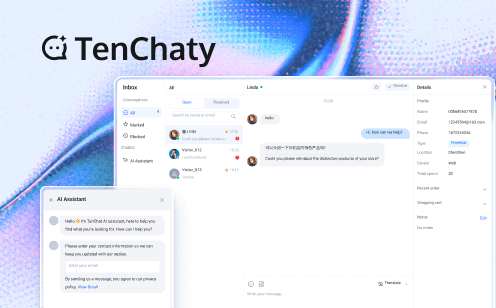
In the dynamic world of mobile applications, call quality can make or break the user experience. As an app developer, understanding and optimizing call quality is not just a technical challenge but a crucial aspect of ensuring user satisfaction and loyalty. In this blog post, we will explore the importance of call quality, the underlying technology, common issues, and actionable solutions to enhance the audio and video communication experience in mobile apps.
The Significance of Call Quality in Mobile Apps
In the digital age, mobile apps have become the primary means of communication for people across the globe. Whether it's for business meetings, personal conversations, or emergency calls, users expect nothing less than crystal-clear audio and seamless video. High-quality calls are the cornerstone of effective communication, and any degradation can lead to frustration, miscommunication, and, ultimately, user abandonment.
For businesses relying on mobile apps for customer support or remote collaboration, poor call quality can directly impact the bottom line. Customers are less likely to engage with a service that fails to deliver clear communication, leading to lost opportunities and damaged reputations. Moreover, in today's competitive market, where countless apps vie for users' attention, a subpar call experience can set an app apart from its competitors – and not in a good way.
How Mobile App Call Quality Works
At the heart of mobile app call quality lies the Voice over Internet Protocol (VoIP) technology. VoIP revolutionizes communication by converting analog audio signals into digital packets, which are then transmitted over the Internet. These packets travel through various network nodes and are reassembled at the recipient's end to recreate the original audio stream.
However, this seemingly straightforward process is fraught with potential pitfalls. The digital packets are vulnerable to network congestion, latency, and packet loss. Latency, or the delay in packet transmission, can disrupt the natural flow of conversation, leading to awkward pauses and overlapping speech. Packet loss occurs when packets fail to reach their destination, resulting in audio gaps or distorted sound. Jitter, on the other hand, causes fluctuations in packet arrival times, leading to choppy audio playback.

Common Call Quality Issues and Measurement Metrics
Identifying the Culprits
- Packet Loss: A nemesis of clear communication, packet loss can occur due to network congestion, weak signal strength, or router misconfigurations. Even a small percentage of lost packets can cause significant audio disruptions, making conversations difficult to follow.
- Jitter: This phenomenon, often caused by network instability or overloaded servers, leads to inconsistent packet arrival times. The result is a jerky, unnatural audio playback that can be highly distracting and frustrating for users.
- Latency: High latency can introduce noticeable delays in audio transmission, creating a disjointed conversation experience. This is especially problematic in real-time communication scenarios, such as video conferencing or online gaming.
Measuring Call Quality: The Metrics that Matter
- Mean Opinion Score (MOS): The industry-standard metric for gauging call quality, MOS provides a numerical representation of the subjective user experience. Ranging from 1.0 (unacceptable) to 5.0 (excellent), it takes into account factors like latency, jitter, and packet loss to deliver an overall assessment of call clarity.
- R-Factor: Complementing MOS, the R-factor measures the real-time user experience by evaluating delay, echo, and recency. It offers valuable insights into the immediate quality of a call, helping developers pinpoint and address issues promptly.
- Gap and Burst Density: These metrics are crucial for troubleshooting packet loss problems. By analyzing the density of gaps and bursts in packet transmission, developers can identify patterns and sources of packet loss, enabling targeted optimizations.
- Quality of Service (QoS): QoS monitoring tracks the transmission quality of packets, ensuring that VoIP traffic receives the necessary bandwidth and priority. This helps maintain a consistent call experience, even in the face of network congestion.
Strategies to Elevate Call Quality in Mobile Apps
Optimizing Device Usage
- Choosing the Right Audio Output: Laptop speakers are notorious for their poor audio quality and susceptibility to background noise. Instead, encourage users to opt for headphones or dedicated mobile/desktop phones for a more immersive and distraction-free call experience.
- Embracing Noise-Canceling Technology: Headsets with built-in noise-canceling features can significantly enhance call clarity by reducing ambient noise. Dual-mode active noise cancellation (ANC) is particularly effective, adapting to different environments to ensure pristine audio when it comes to wired vs. wireless, wired headsets, whether corded or USB, generally offer more reliable and clear audio transmission compared to Bluetooth counterparts.
Network Optimization: The Key to Seamless Calls
- Taming Network Congestion: Network congestion is a leading cause of jitter and packet loss. IT teams can utilize network monitoring tools to identify and prioritize VoIP traffic. By implementing Quality of Service (QoS) features in routers, they can allocate sufficient bandwidth and protect VoIP packets from being lost or delayed. Additionally, adjusting router settings to prioritize VoIP calls over other bandwidth-intensive activities, such as video streaming, can go a long way in ensuring smooth communication.
- Leveraging Seamless Network Switching: For mobile users on the go, seamless network switching is essential. Apps like Dialpad offer the ability to transition effortlessly between WiFi and carrier networks, ensuring uninterrupted call quality. This feature is a game-changer for users who are constantly on the move and rely on their mobile apps for communication.
The Power of Testing and Feedback
- Pre-Call Network Testing: Empower users to test their network connection before initiating a call. Tools like Dialpad's network assessment wizard allow users to evaluate microphone connection, audio playback, network connectivity, and more. By identifying and addressing potential issues upfront, users can enjoy a more reliable call experience.
- Post-Call Quality Feedback: Encourage users to rate call quality immediately after a call. This real-time feedback provides invaluable insights into the user experience. Apps can automatically collect and analyze this data, using it to identify trends and areas for improvement. For example, Dialpad's feedback system flags calls with low ratings and prompts users to provide additional details, enabling developers to quickly address recurring issues.
Tencent RTC: Embedding professional audio and video communication capabilities with a just a few lines of code
- Complete UIKits: Provides a comprehensive set of UIKits that include interfaces and UI for communication functions on iOS, Android, Flutter, and Web platforms. The UI can be used directly or customized as needed.
- Offline Push Notifications: Allows your application to receive call notifications even when running in the background or offline, supporting various offline push methods such as VoIP and message alerts.
- Floating Window: Supports minimizing the call interface and displaying it as a floating window on top of the application interface, with multiple floating window styles suitable for different call scenarios.
- Call History: Supports both local and cloud-based call records, offering features such as data statistics, record viewing, and callbacks, helping developers understand user call usage, frequency, and habits.
Usage Scenarios:
- Social Chat: Stay connected with friends and family online, share your daily life, create a strong sense of belonging, and bring each other closer.
- Healthcare: Easily access medical and health services through safer and more convenient virtual consultations, improving patient satisfaction and health outcomes.
- Sales and Consultation: Provide a video customer service experience that is accessible anytime, anywhere, build trust with customers through face-to-face conversations, and efficiently solve customer issues.
- Online Education: Easily connect students, tutors, and instructors through voice and video, covering various teaching scenarios such as one-on-one interactive teaching and small group classes.
Conclusion
In conclusion, as mobile app developers, we hold the key to delivering an exceptional call-quality experience. By understanding the intricacies of VoIP technology, identifying and addressing common issues, and implementing the strategies and best practices outlined above, we can create apps that not only meet but exceed user expectations. Remember, in the world of mobile communication, clear calls are the currency of success. So, let's strive for excellence and revolutionize the way people connect through our apps.
FAQs: Answering Your Call Quality Queries
What are the key call quality metrics, and how are they calculated?
The R-factor and MOS are two fundamental metrics. The R-factor is calculated based on latency, jitter, and packet loss and provides an assessment of the real-time call experience. MOS, derived from the R-factor, offers a more comprehensive evaluation of voice quality. Tools like Perpetual Speech Quality Measure, Perceptual Evaluation of Speech Quality, and Non-intrusive monitoring are used to estimate MOS scores, while passive monitoring of Real-Time Protocol (RTP) streams helps determine the R-factor. The E model also provides a quality rating considering "mouth-to-ear" characteristics.
What elements should be included in a call quality monitoring evaluation form?
A comprehensive form should test bandwidth, network capacity, route hops, ports, and firewall rules. Reports should include metrics such as maximum packet loss, maximum response time, jitter, connection packet loss, and MOS score. Dialpad's network assessment test is an excellent example of a tool that aggregates all these essential elements for a detailed analysis.
Why is it crucial to calibrate call quality scores?
Calibrating scores allows you to gauge the current state of your VoIP call quality. If you receive complaints about dropped calls or poor service, it helps you identify and rectify the underlying issues. As your business evolves, regular calibration ensures that your call quality remains consistent and adaptable to changes, be it due to network upgrades, service expansions, or training requirements.
How often should call quality be evaluated and optimized?
While a quarterly evaluation is a good starting point, it's advisable to be more proactive. If possible, monthly or even weekly evaluations can help you stay on top of any emerging issues. In case of reported problems or a significant increase in dropped calls, immediate testing and optimization are essential to maintain user satisfaction.
Who should be in charge of ensuring call quality?
In an ideal scenario, a network administrator with the necessary technical expertise should oversee call quality assurance. However, for small businesses, a qualified team member can be assigned this responsibility. This person would be responsible for conducting regular evaluations, implementing optimizations, and collaborating with relevant stakeholders to address any issues.
Which KPIs should be monitored to measure call quality?
Key KPIs include Call Blockage Rates, which indicate how easily customers can access your services. High blockage rates suggest network or service issues that need immediate attention. The call Abandonment Rate reflects the percentage of customers who hang up before being answered, highlighting potential application or routing problems. Missed Calls provide insights into potential call quality issues or insufficient staffing. Mean Time to Resolve measures the efficiency of issue resolution, directly impacting customer satisfaction and long-term performance.
If you have any questions or need assistance online, our support team is always ready to help. Please feel free to Contact us or join us on Telegram or Discord. For technical problems, you can also get help directly from developers on Stack Overflow.

